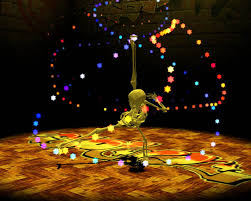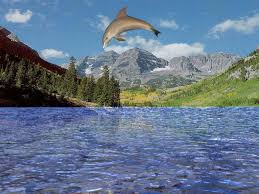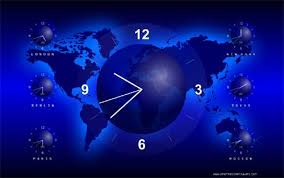Free Screensavers Biography
The Republic of the Congo is a country located in Central Africa. It is bordered by Gabon, Cameroon, the Central African Republic, the Democratic Republic of the Congo, and the Angolan exclave of Cabinda.
The region was dominated by Bantu-speaking tribes, who built trade links leading into the Congo River basin. Congo was formerly part of the French colony of Equatorial Africa.[3] Upon independence in 1960, the former French region of Middle Congo became the Republic of the Congo. The People's Republic of the Congo was a Marxist-Leninist single-party state from 1970 to 1991. Multiparty elections have been held since 1992, although a democratically elected government was ousted in the 1997 Republic of the Congo Civil War.The earliest inhabitants of the region were Pygmy people, who later were largely displaced and absorbed by Bantu-speaking peoples who found tribes during the Bantu expansions. The Bakongo are a Bantu ethnicity that also occupied parts of present-day Angola, Gabon, and Democratic Republic of the Congo, forming the basis for ethnic affinities and rivalries among those countries. Several Bantu kingdoms—notably those of the Kongo, the Loango, and the Teke—built trade links leading into the Congo River basin.
The mouth of the Congo was reached by the Portuguese explorer Diogo Cão in 1484Commercial relationships were quickly established between the inland Bantu kingdoms and European merchants who traded various commodities, manufactured goods, and slaves captured from the hinterlands. For centuries, the Congo river delta was a major commercial hub for transatlantic trade. However, when direct European colonization of the African continent began in the late 19th century, the power of the Bantu societies in the region was eroded.Commercial relationships were quickly established between the inland Bantu kingdoms and European merchants who traded various commodities, manufactured goods, and slaves captured from the hinterlands. For centuries, the Congo river delta was a major commercial hub for transatlantic trade. However, when direct European colonization of the African continent began in the late 19th century, the power of the Bantu societies in the region was eroded.The area north of the Congo River came under French sovereignty in 1880 as a result of Pierre de Brazza's treaty with Makoko of the Bateke.[5] This Congo Colony became known first as French Congo, then as Middle Congo in 1903. In 1908, France organized French Equatorial Africa (AEF), comprising Middle Congo, Gabon, Chad, and Oubangui-Chari (the modern Central African Republic). Brazzaville was selected as the federal capital. Economic development during the first 50 years of colonial rule in Congo centered on natural resource extraction. The methods were often brutal: establishment of the Congo–Ocean Railroad following World War I has been estimated to have cost at least 14,000 lives.During the Nazi occupation of France during World War II, Brazzaville functioned as the symbolic capital of Free France between 1940–1943.[7] The Conference of 1944 heralded a period of major reform in French colonial policy. Congo benefited from the postwar expansion of colonial administrative and infrastructure spending as a result of its central geographic location within AEF and the federal capital at Brazzaville.








The Republic of the Congo is a country located in Central Africa. It is bordered by Gabon, Cameroon, the Central African Republic, the Democratic Republic of the Congo, and the Angolan exclave of Cabinda.
The region was dominated by Bantu-speaking tribes, who built trade links leading into the Congo River basin. Congo was formerly part of the French colony of Equatorial Africa.[3] Upon independence in 1960, the former French region of Middle Congo became the Republic of the Congo. The People's Republic of the Congo was a Marxist-Leninist single-party state from 1970 to 1991. Multiparty elections have been held since 1992, although a democratically elected government was ousted in the 1997 Republic of the Congo Civil War.The earliest inhabitants of the region were Pygmy people, who later were largely displaced and absorbed by Bantu-speaking peoples who found tribes during the Bantu expansions. The Bakongo are a Bantu ethnicity that also occupied parts of present-day Angola, Gabon, and Democratic Republic of the Congo, forming the basis for ethnic affinities and rivalries among those countries. Several Bantu kingdoms—notably those of the Kongo, the Loango, and the Teke—built trade links leading into the Congo River basin.
The mouth of the Congo was reached by the Portuguese explorer Diogo Cão in 1484Commercial relationships were quickly established between the inland Bantu kingdoms and European merchants who traded various commodities, manufactured goods, and slaves captured from the hinterlands. For centuries, the Congo river delta was a major commercial hub for transatlantic trade. However, when direct European colonization of the African continent began in the late 19th century, the power of the Bantu societies in the region was eroded.Commercial relationships were quickly established between the inland Bantu kingdoms and European merchants who traded various commodities, manufactured goods, and slaves captured from the hinterlands. For centuries, the Congo river delta was a major commercial hub for transatlantic trade. However, when direct European colonization of the African continent began in the late 19th century, the power of the Bantu societies in the region was eroded.The area north of the Congo River came under French sovereignty in 1880 as a result of Pierre de Brazza's treaty with Makoko of the Bateke.[5] This Congo Colony became known first as French Congo, then as Middle Congo in 1903. In 1908, France organized French Equatorial Africa (AEF), comprising Middle Congo, Gabon, Chad, and Oubangui-Chari (the modern Central African Republic). Brazzaville was selected as the federal capital. Economic development during the first 50 years of colonial rule in Congo centered on natural resource extraction. The methods were often brutal: establishment of the Congo–Ocean Railroad following World War I has been estimated to have cost at least 14,000 lives.During the Nazi occupation of France during World War II, Brazzaville functioned as the symbolic capital of Free France between 1940–1943.[7] The Conference of 1944 heralded a period of major reform in French colonial policy. Congo benefited from the postwar expansion of colonial administrative and infrastructure spending as a result of its central geographic location within AEF and the federal capital at Brazzaville.
Free Screensavers
Free Screensavers
Free Screensavers
Free Screensavers
Free Screensavers
Free Screensavers
Free Screensavers
Free Screensavers
Free Screensavers
How To Get Free Screen Savers
Free Screensaver
No comments:
Post a Comment